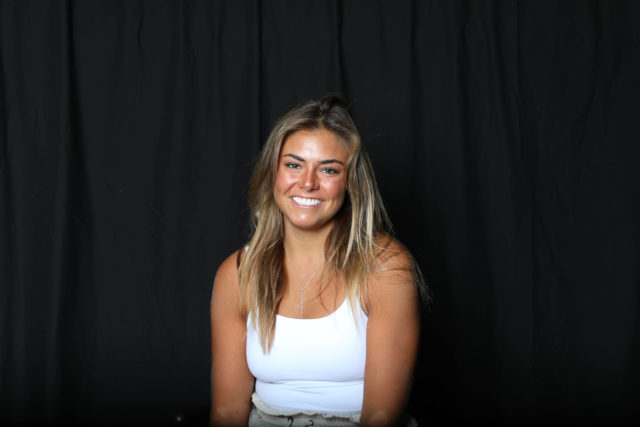By Vivian Roach | Staff Writer
The benefit-risk ratio is weighing towards the benefit of a coronavirus vaccine. What is the real risk when global public health is on the line? After you do your research, what are you really afraid of and how do you support that fear?
Firstly, one of many trackers, the Milken Institute COVID-19 treatment and vaccine tracker website, provides a count of treatments and vaccines in development which is updated periodically. Additionally, it includes thorough classification of each with the developer, type of vaccine or treatment and its stage in development. You might notice there are many different types of vaccines and treatments — some have been used before and others are quite new in the race for a COVID-19 cure.
The traditional types of vaccines — inactivated virus, live attenuated virus and protein subunit — have been used to develop vaccines for well-known illnesses like the flu or measles. Consequently, scientists know what a successful trial would look like for COVID-19 vaccines that use these traditional bases. They also have a precedent of side effects and costs scientists can expect, two unknown factors in new vaccines that worry many.
COVID-19 vaccines in development that use the established Hepatitis-B vaccine base, a protein subunit type, have to be affixed with the COVID-19 spike protein piece in order to build up immunity in the body. Developers and researchers make a rough prediction from precedent of how the vaccine will do in clinical trials and what the cost to make it will be in order to determine if it is a worthwhile vaccine.
Merck, a big pharmaceutical company, has announced it is developing two COVID-19 vaccines, one with a traditional base and one with a new base. Take note, the vaccine Merck is developing with the traditional base is the same one used in the measles vaccine, released in 1988.
It is also important to keep in mind that these vaccines being developed will most certainly not cure the virus. There is a very low threshold for vaccine approval, as the vaccine must show that it will block at least 50% of the virus. What researchers and developers are hoping for in the first round of vaccines is that they reduce the severity of the disease, consequently reducing the mortality of the disease and making the virus less threatening to public health. That means there will be less risk going out in public and socializing.
Compare it to a flu vaccine — you might get a flu vaccine but still get the flu some years, because the vaccine doesn’t necessarily block the virus, only some of it. So those worried about the effectiveness of a vaccine might think they are founded. However, effectiveness is measured by the efficacy of the virus and its coverage in a population. Efficacy is the probability of preventing infection.
According to a study published in the American Journal for Preventive Medicine, for a vaccine alone to be sufficient in stopping the virus it needs to have an 80% efficacy rate and cover 75% of the population. This holds true as population exposed increases from 5% to 30%.
In trials, the study found that when coverage drops to 50%, even a 100% efficacy rate can’t even eliminate a peak maximum of daily COVID-19 cases. Achieving a vaccine with high efficacy and high coverage would be ideal to stop cases from rising, and to eliminate the pandemic, it is important that lower efficacy vaccines are used too. The study found a vaccine with 40% efficacy keeps the health system from being overwhelmed, preventing up to 2.8 million patients from needing a ventilator.
As any responsible information consumer, it is critical that you get all of your facts before fully supporting a fact or opinion. Seek out supporting sources and research about them. Consider if your source has bias or a reasonable knowledge base. Especially with the influx of information surrounding the coronavirus, it’s important to collect more information before accepting anything as fact.
I would say the same for someone who has had a bad experience with a vaccine or thought to have had experienced side effects from a vaccine. How founded are the speculations around an experience with a vaccine in the past, and can the effects be traced back to the vaccine undoubtedly? Do you have a clear knowledge of what it would take for those bad effects to occur?
If you also do your research on vaccines in the past, they are generally not ineffective. Though disease spread has gone down with improved socioeconomic conditions – sewage systems, hygiene, better nutrition and less crowded living – there are specific cases of vaccine-preventable diseases that were lessened by implementation of a vaccine. Looking at the case for measles, reported cases dropped by almost 10,000 from 1980 to 1981. However, by the late 1980s and in the 1990s, cases were back up when immunizations had been reportedly low. We are now seeing that same trend, a resurgence in the past couple years, especially in Europe where the coverage rate has been down from record highs and below what is needed for herd immunity.
Vaccines go through rigorous tests and trials to prove their effectiveness and safety. It is important to collect all your information before making any presumptions about a COVID-19 vaccine.
At the end of the day, to me, the benefit outweighs the risk of a vaccine, especially when the lives of the at-risk population, most likely one in every family, are at stake. Or at the benefit of a lively future for my own children and the continued education of the generations of children below me. Or simply the trivial benefit of a return to normal life.



